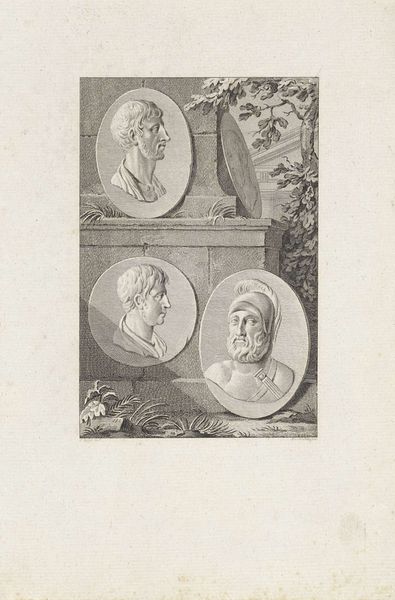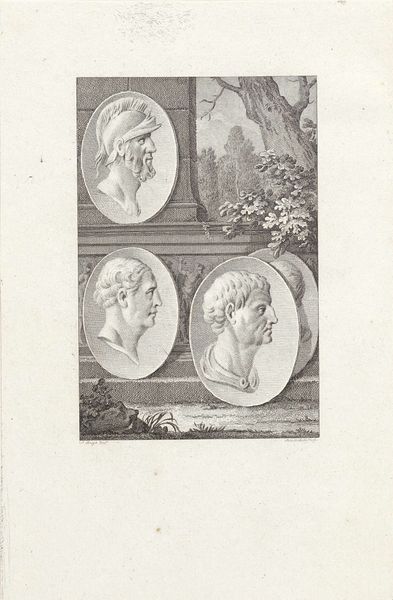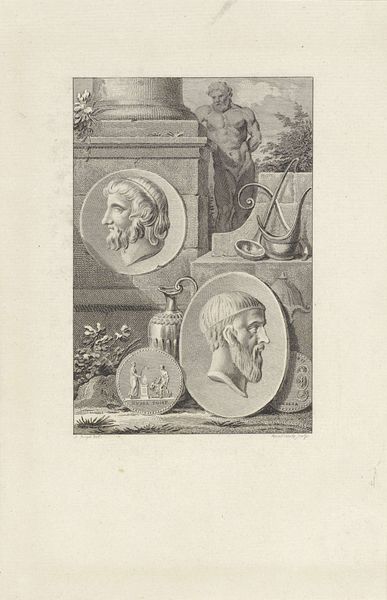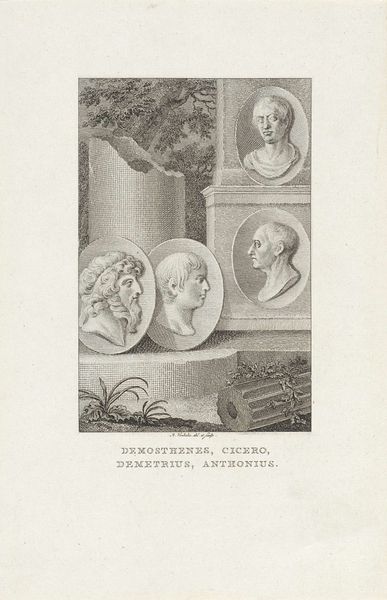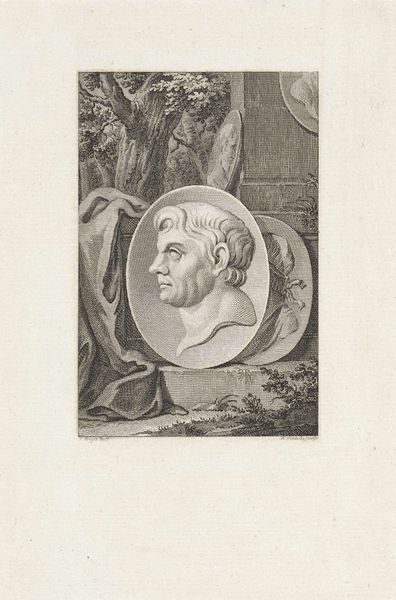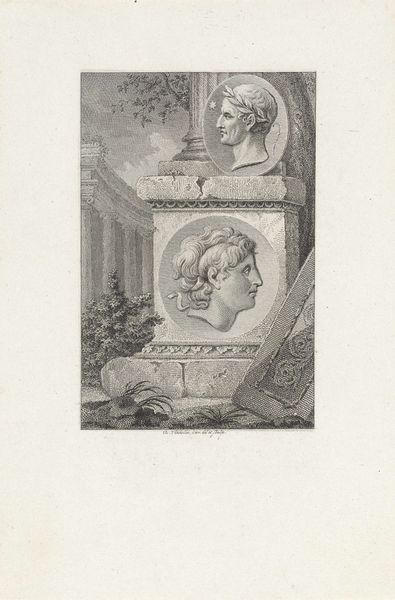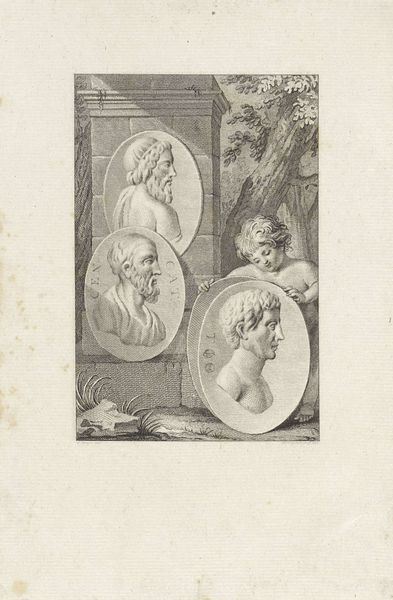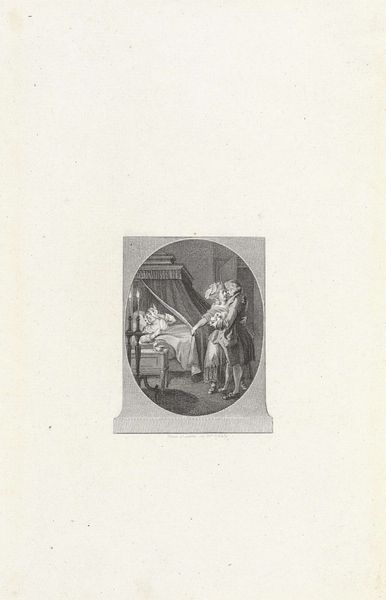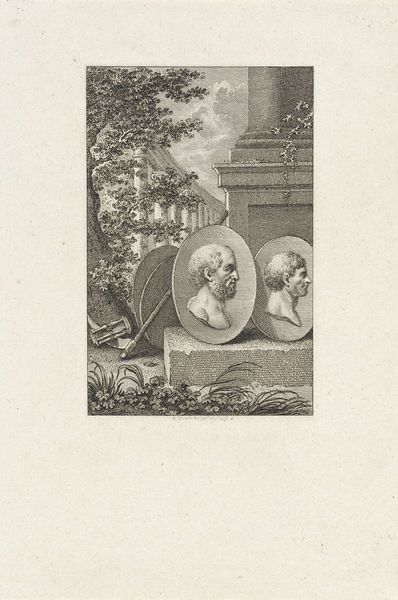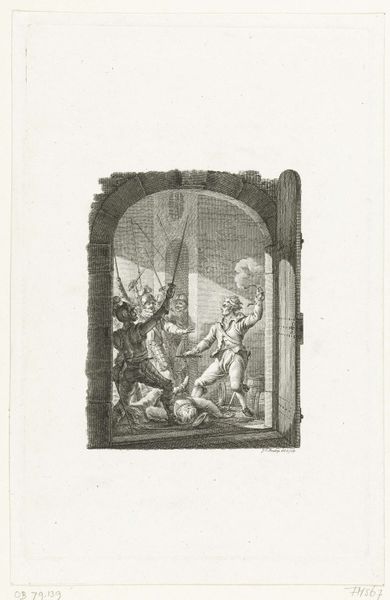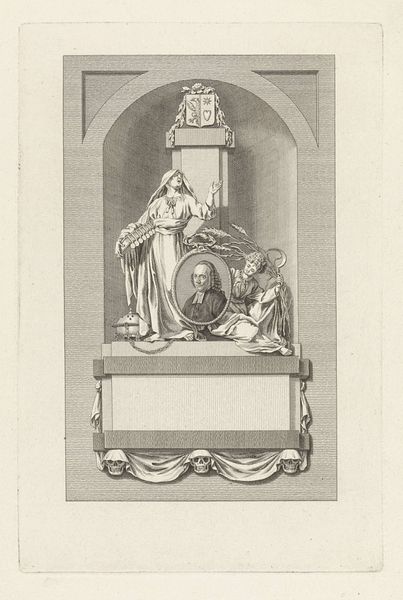
Medaillons met portretten van Solon, Publius Valerius Publicola en Themistocles 1793
0:00
0:00
print, engraving
#
portrait
#
neoclacissism
# print
#
greek-and-roman-art
#
classical-realism
#
figuration
#
form
#
line
#
history-painting
#
academic-art
#
engraving
Dimensions: height 239 mm, width 159 mm
Copyright: Rijks Museum: Open Domain
Editor: This engraving from 1793 by Reinier Vinkeles, titled "Medaillons met portretten van Solon, Publius Valerius Publicola en Themistocles," features, as the title suggests, medallion portraits. I notice a sort of romantic, classical style in the printmaking, but the arrangement seems almost…academic. What do you make of it? Curator: Well, look at the historical context. This was created during a period of revolutionary fervor and a renewed interest in classical virtues. How do you think imagery like this served a particular function? Editor: Maybe it’s meant to evoke a sense of civic duty and republican ideals by showing leaders from ancient Greece and Rome? Is it promoting their qualities or actions? Curator: Exactly. The subjects are presented in a noble and idealized way, referencing a glorious past. The meticulous detail emphasizes rationality, order, and heroism. What sociopolitical message do you think an artist like Vinkeles may have tried to send to viewers at the time, knowing that these prints would have circulated among a certain enlightened class? Editor: If they were trying to promote those virtues in people, was it effective? Surely not everyone liked having that message pushed on them. Were there competing styles that sent a different message at the time? Curator: The rise of Romanticism, with its focus on emotion and individualism, certainly challenged the dominance of Neoclassicism. But images like this continued to hold sway, particularly within academic circles and among those who yearned for a return to traditional values. Editor: So, it’s not just about aesthetic preferences; it reflects a broader political and social debate played out through art. I had initially seen this as just a typical "classical" artwork but there were more layers in promoting republicanism. Thank you, I never knew how history painting in this era tied in directly with societal ideas. Curator: Indeed. And that's where art history truly comes alive – understanding the visual language in its historical and cultural context.
Comments
No comments
Be the first to comment and join the conversation on the ultimate creative platform.
